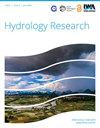应用先进的机器学习算法和地理空间技术在埃塞俄比亚甘贝拉平原的地下水潜势区测绘
IF 2.4
4区 环境科学与生态学
Q2 WATER RESOURCES
引用次数: 0
摘要
地下水的可用性是埃塞俄比亚大多数半干旱地区的关键焦虑之一。本研究的目的是研究甘贝拉冲积平原地下水潜势带图。该研究将层次分析法(AHP)模型应用于四种不同的机器学习算法:随机森林分类器(RFC)、梯度增强分类器(GBC)、决策树分类器(DTC)和k -邻居分类器(KNC)。用于预测的特征包括地质、地貌、坡度、土壤、地形密度、排水密度、土地利用和土地覆盖(LULC)、归一化植被指数(NDVI)、地形湿度指数(TWI)、地形粗糙度指数(TRI)和降雨量。将最终产出的地下水电位区划分为低、中、高、极高电位区。通过受试者工作曲线(ROC)验证AHP、RFC、GBC、DTC和KNC的曲线下面积(AUC)分别为78.2、93.4、92.5、72.4和87.7%。结果表明,RFC和GBC是最好的地下水潜势带(GWPZ)图估计方法。研究还表明,降雨和地貌是影响GWPZ的主要因素。其结果可能促进在该国气候类似的其他地区改进管理办法。本文章由计算机程序翻译,如有差异,请以英文原文为准。
Application of advanced machine learning algorithms and geospatial techniques for groundwater potential zone mapping in Gambela Plain, Ethiopia
Groundwater availability is one of the key anxieties in most semi-arid regions of Ethiopia. The purpose of this study was to investigate the groundwater potential zone map of the alluvial plain of Gambela. The study applied analytic hierarchy process (AHP) models with four different machine learning algorithms: random forest classifier (RFC), gradient boosting classifier (GBC), decision tree classifier (DTC), and K-neighbor classifier (KNC). The features that are used as predictors include geology, geomorphology, slope, soil, lineament density, drainage density, land use and land cover (LULC), normalized difference vegetation index (NDVI), topographic wetness index (TWI), topographic roughness index (TRI), and rainfall. The final output of the groundwater potential zone was classified as low, moderate, high, and very high potential zones. The authentication through receiver operating curve (ROC) shows 78.2, 93.4, 92.5, 72.4, and 87.7% values of area under the curve (AUC) for AHP, RFC, GBC, DTC, and KNC, respectively. The results show that RFC and GBC are the best GWPZ map estimator. The study also shows that rainfall and geomorphology are the primary factors influencing the GWPZ. The outcome might promote improved management alternatives in other areas of the country with a comparable climate.
求助全文
通过发布文献求助,成功后即可免费获取论文全文。
去求助
来源期刊

Hydrology Research
WATER RESOURCES-
CiteScore
5.00
自引率
7.40%
发文量
0
审稿时长
3.8 months
期刊介绍:
Hydrology Research provides international coverage on all aspects of hydrology in its widest sense, and welcomes the submission of papers from across the subject. While emphasis is placed on studies of the hydrological cycle, the Journal also covers the physics and chemistry of water. Hydrology Research is intended to be a link between basic hydrological research and the practical application of scientific results within the broad field of water management.
 求助内容:
求助内容: 应助结果提醒方式:
应助结果提醒方式:


